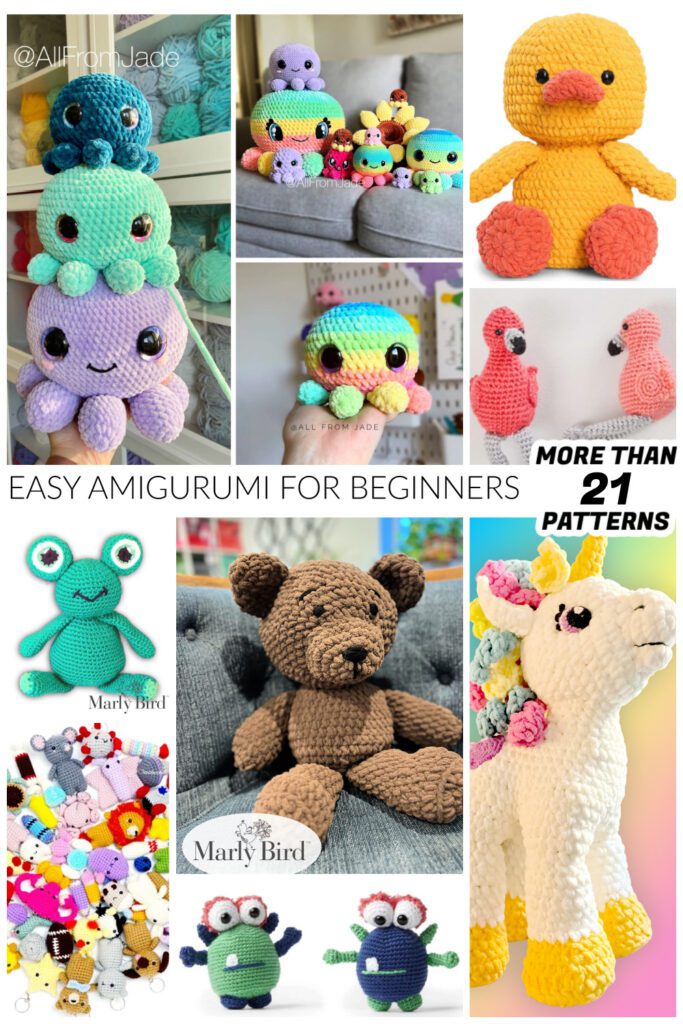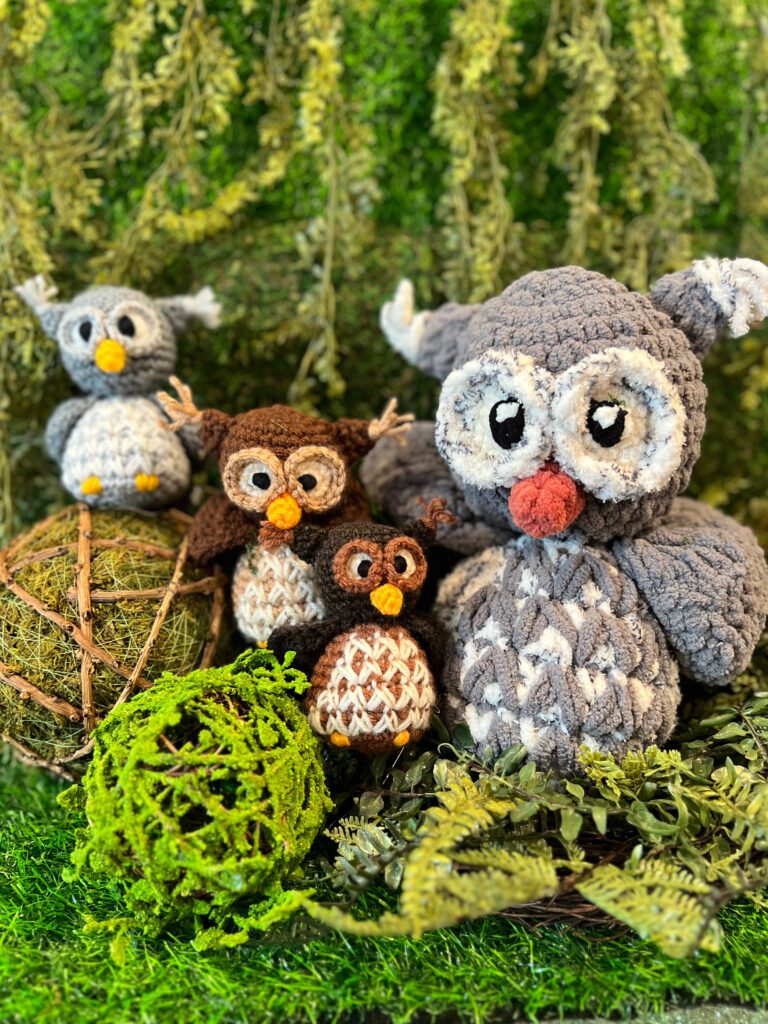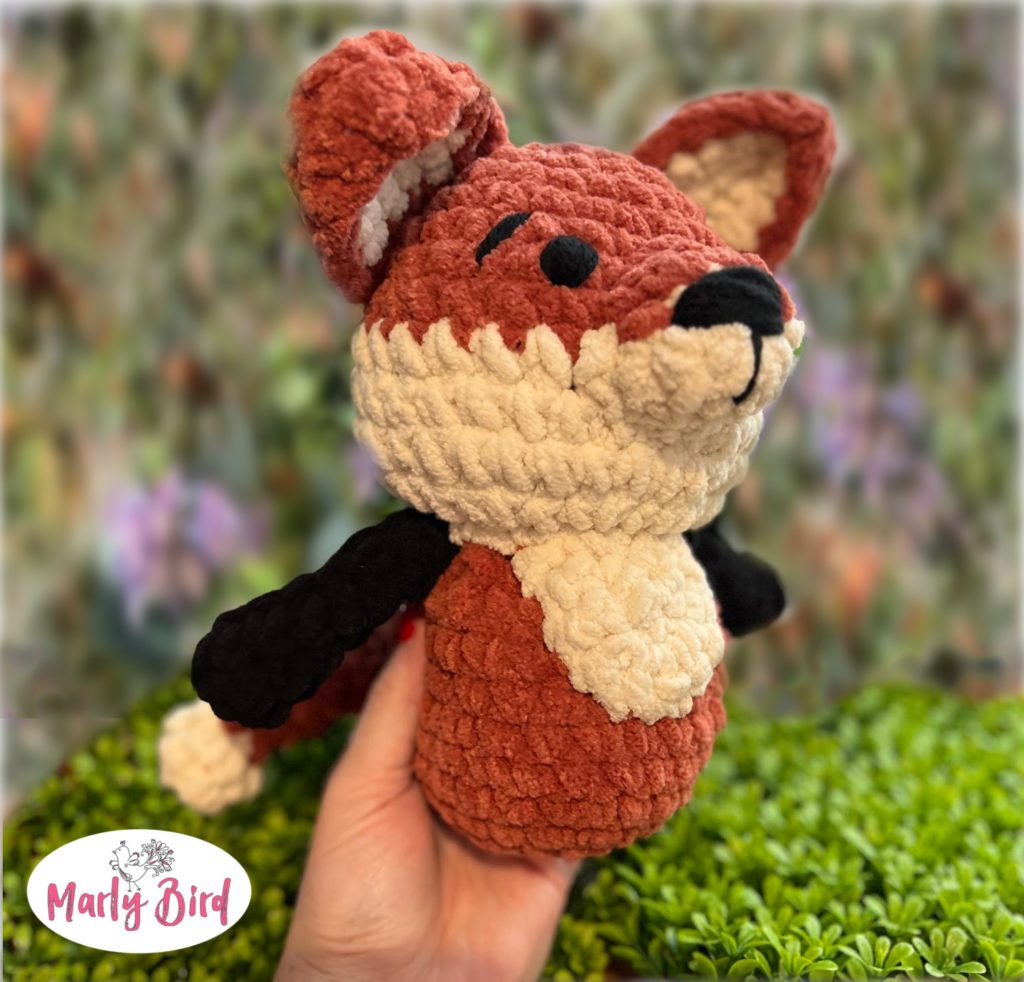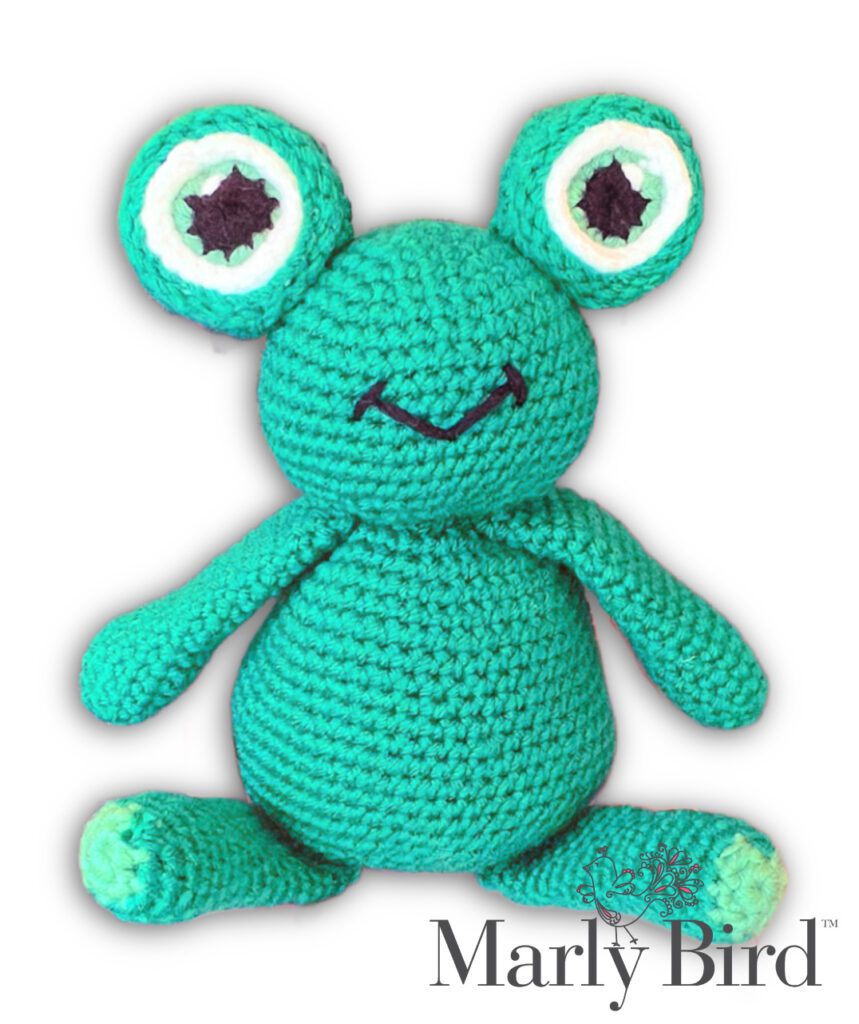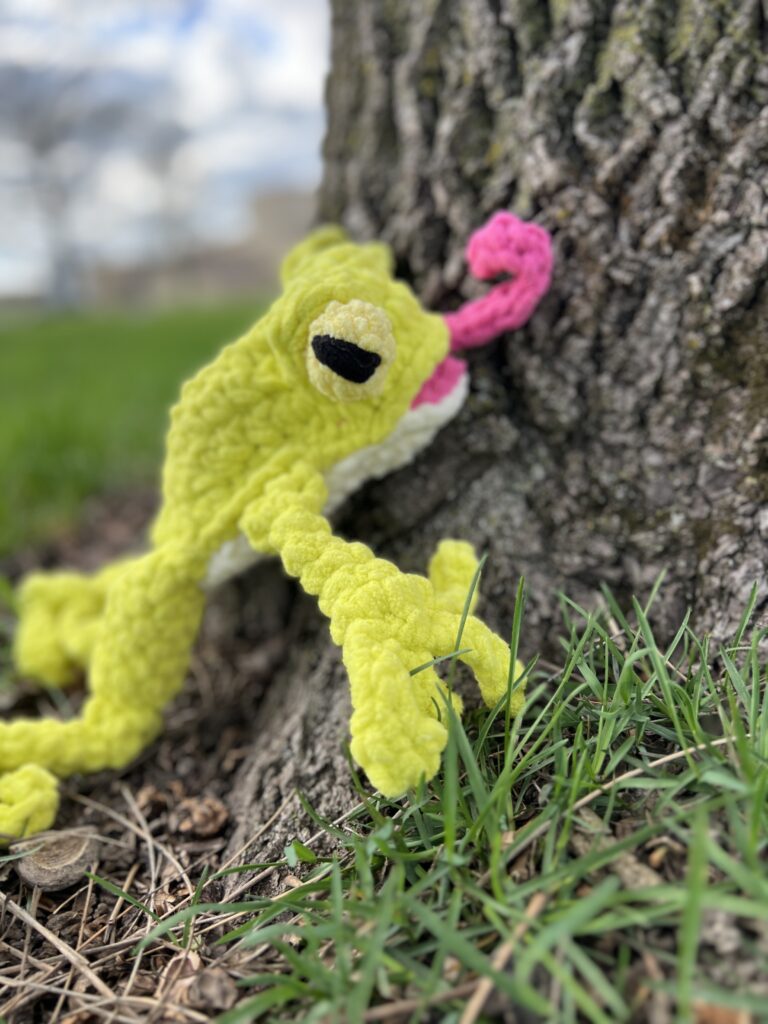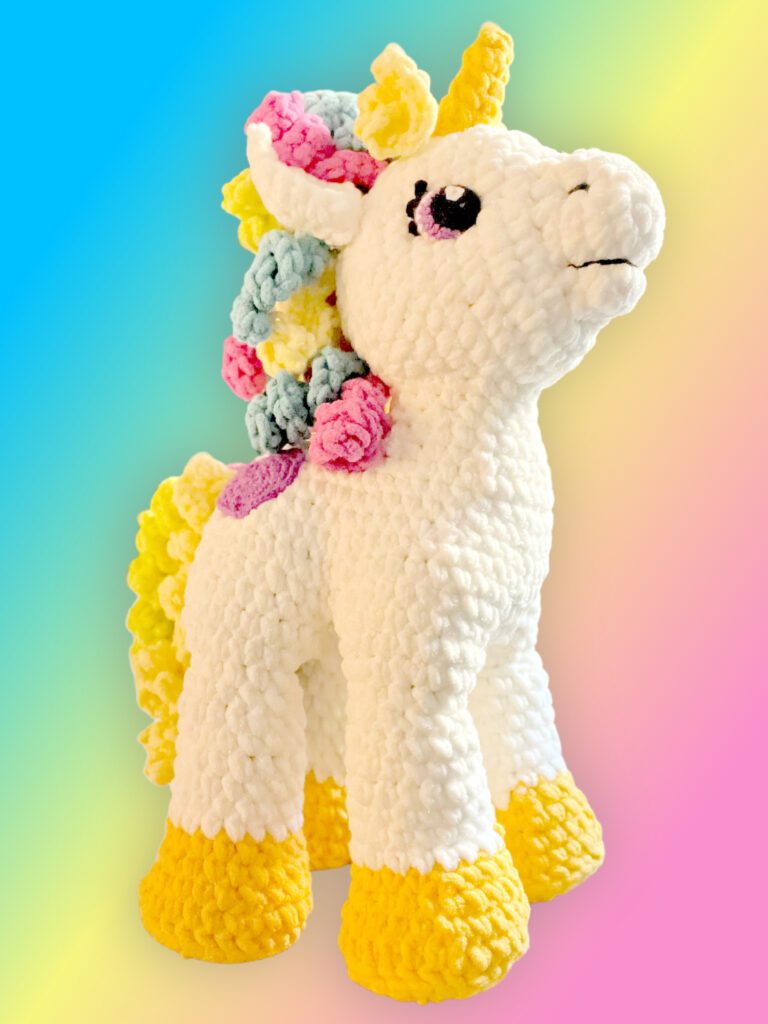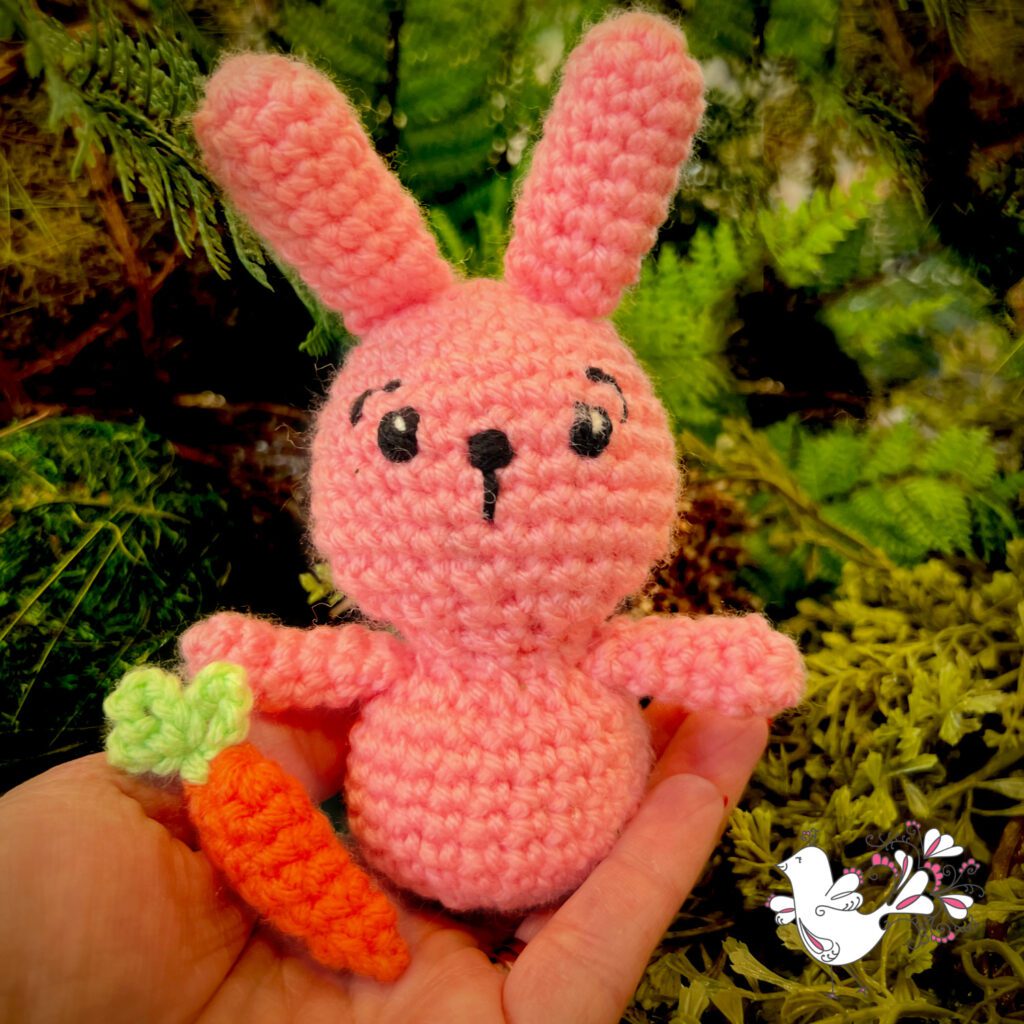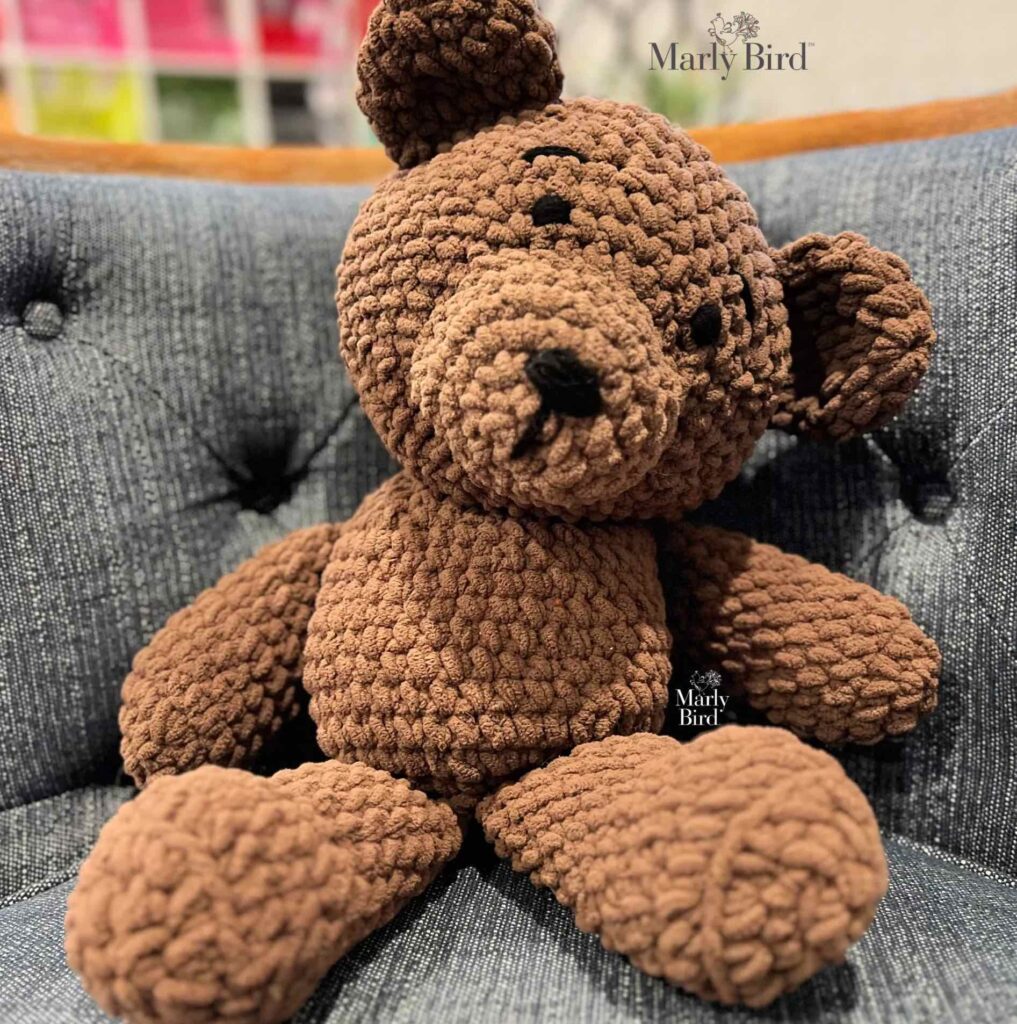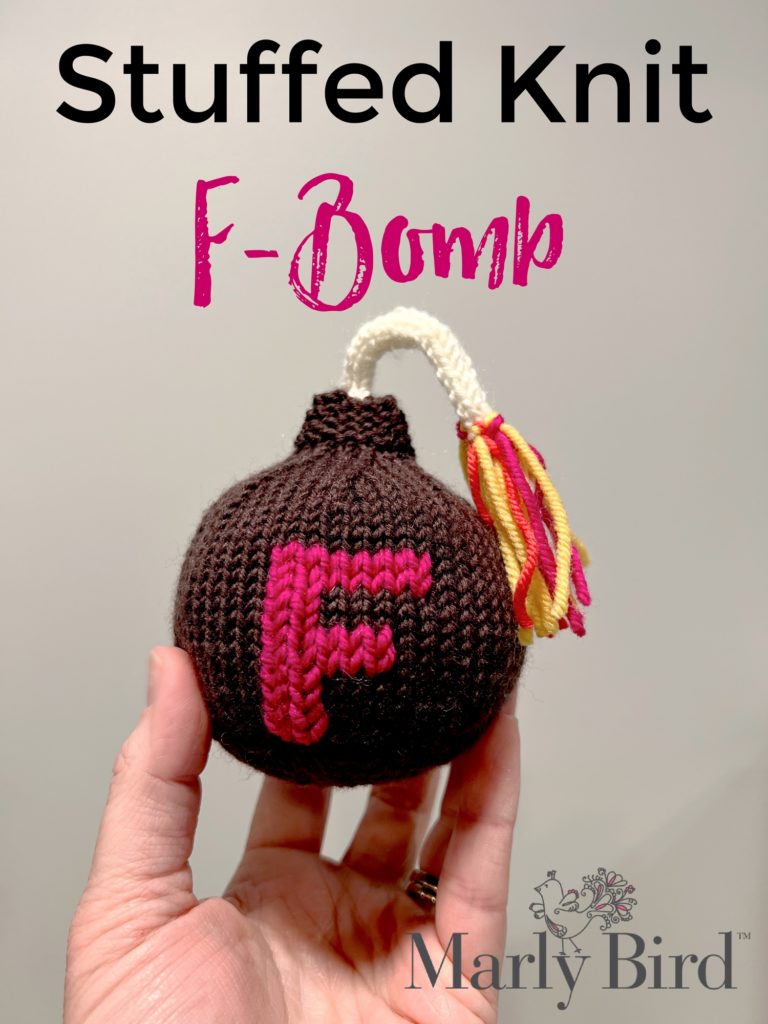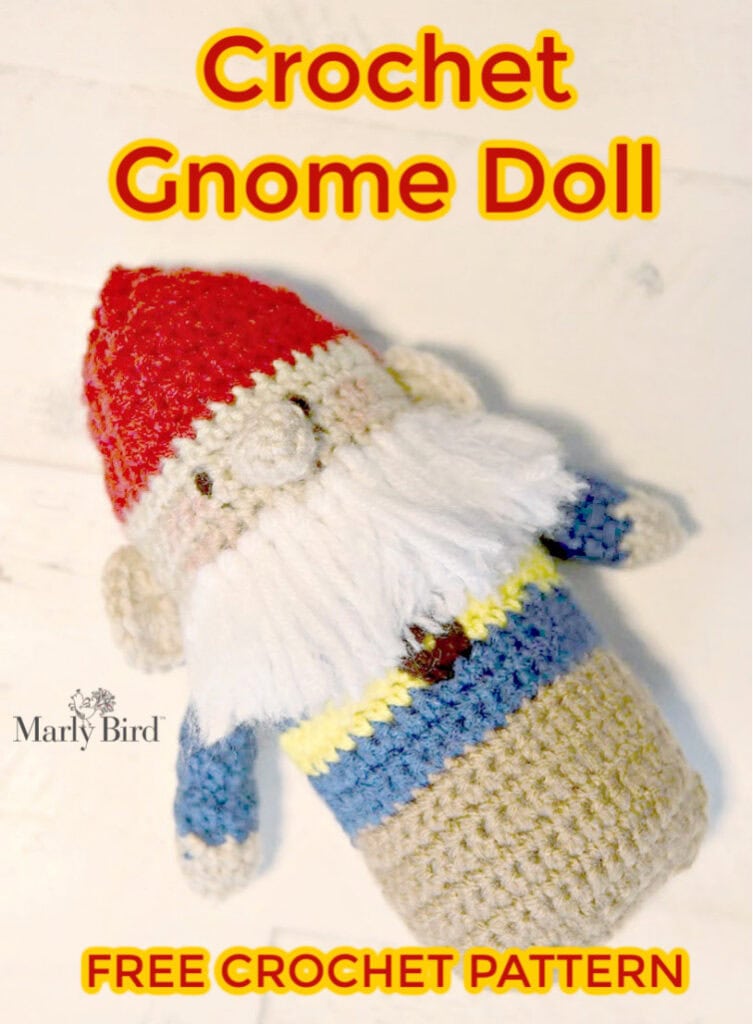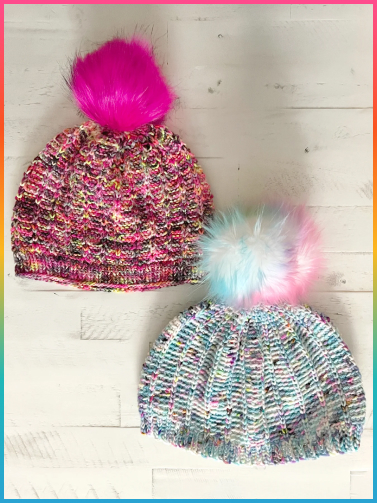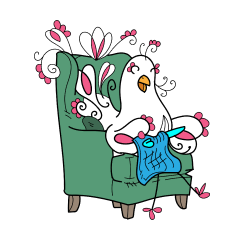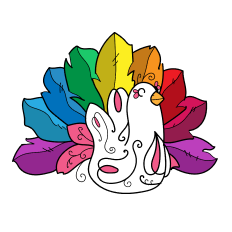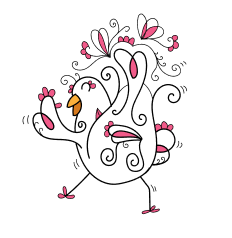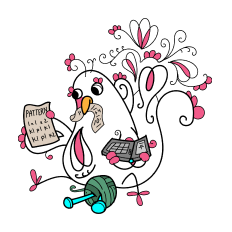What Is Easy Amigurumi For Beginners?
Amigurumi is really big right now. Almost every crafter with a crochet hook or knitting needles has made something amigurumi or wants to try this incredibly popular Japanese art. So, if you fall into the category of being a crochet amigurumi beginner or knitter wanting to try some easy amigurumi, you’re in the right place.
Here’s a cute little frog pattern for you to check out first, then…
Let’s get started by answering a couple of common amigurumi questions.
Affiliate Disclosure: This post contains affiliate links. To learn more please visit my privacy policy here💖
What’s The Difference Between Amigurumi And Crochet?
Well, amigurumi is a form of crochet or knitting. It’s the art of creating small animals, toys, or characters in various styles. The crafts started in Japan with comic book characters and animals, but people worldwide produce patterns of many different types.
The most common patterns are for animals and people. I mean everything from narwhals to Nelly the elephant, dolls, comic book characters, and the British royal family. You can find it all online or in bookstores.
But what’s the best material choice for these little critters? Let’s see…
What Material Is Used For Amigurumi?
Cotton is probably the most common yarn type or fiber used for these creations. It comes in such a wide range of colors, yarn weights, and fiber blends that it’s the ideal material. Cotton yarn also doesn’t stretch easily, making it a great choice for amigurumi since each piece must be stuffed, sometimes quite tightly.
Cotton blends work, too, but if you want to make your piece to a specified size, be sure to check your gauge. If you want to scale your pattern up or down in size, use the crochet hook or knitting needle size appropriate to the yarn you choose. For example, if your pattern is in sport weight and you want something larger, you could use DK weight yarn, jump up to worsted weight, or even bulky for an even larger end product.
🧶 New Yarn
Get feature-length Animation in 50g balls! Mix and match the larger balls with our beloved Animation Amigurumi
Animation is made with mercerized cotton, which means the cotton has been treated to have a smoother surface, allowing it to take in more dye and have a slight sheen while retaining strength.
You can make something from the size of a keychain to a good-sized stuffie simply by switching your yarn and crochet hook or knitting needle size.
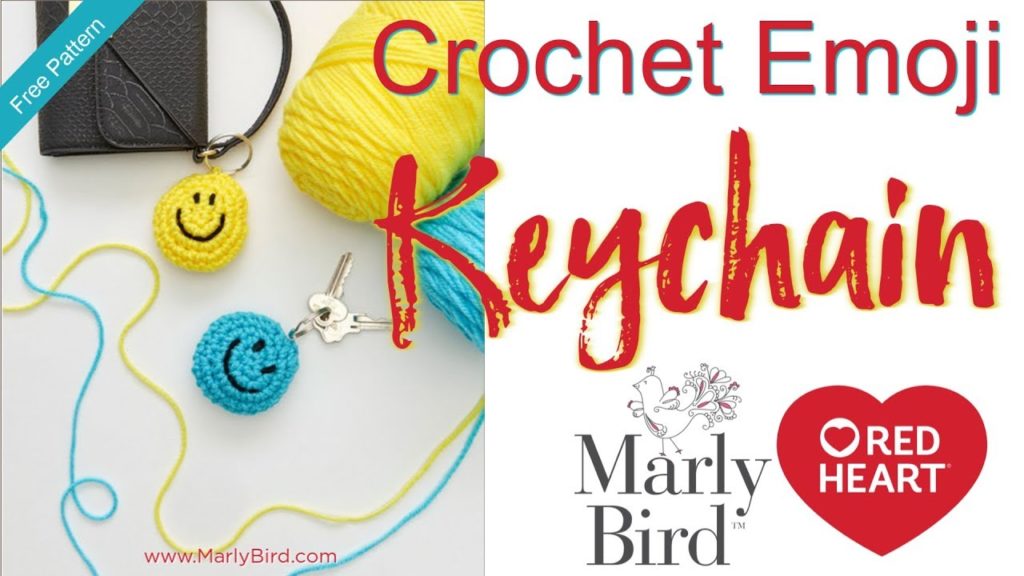
And how about stuffing?
What Is The Best Filling?
Polyester fiberfill is usually the go-to filling or stuffing for amigurumi projects. It’s reasonably inexpensive and easy to find. It’s machine washable and tumble-dryable, but be warned: after several washes, it may gather into balls and get a bit lumpy. This happens only when there isn’t much stuffing inside, so it can move around more easily. So it’s much less likely if you stuff your item firmly as is the amigurumi way.
You can use wool or cotton stuffing, but both are prone to shrinking if you decide to wash your piece and the water is too hot.
But how do I actually get started with amigurumi?
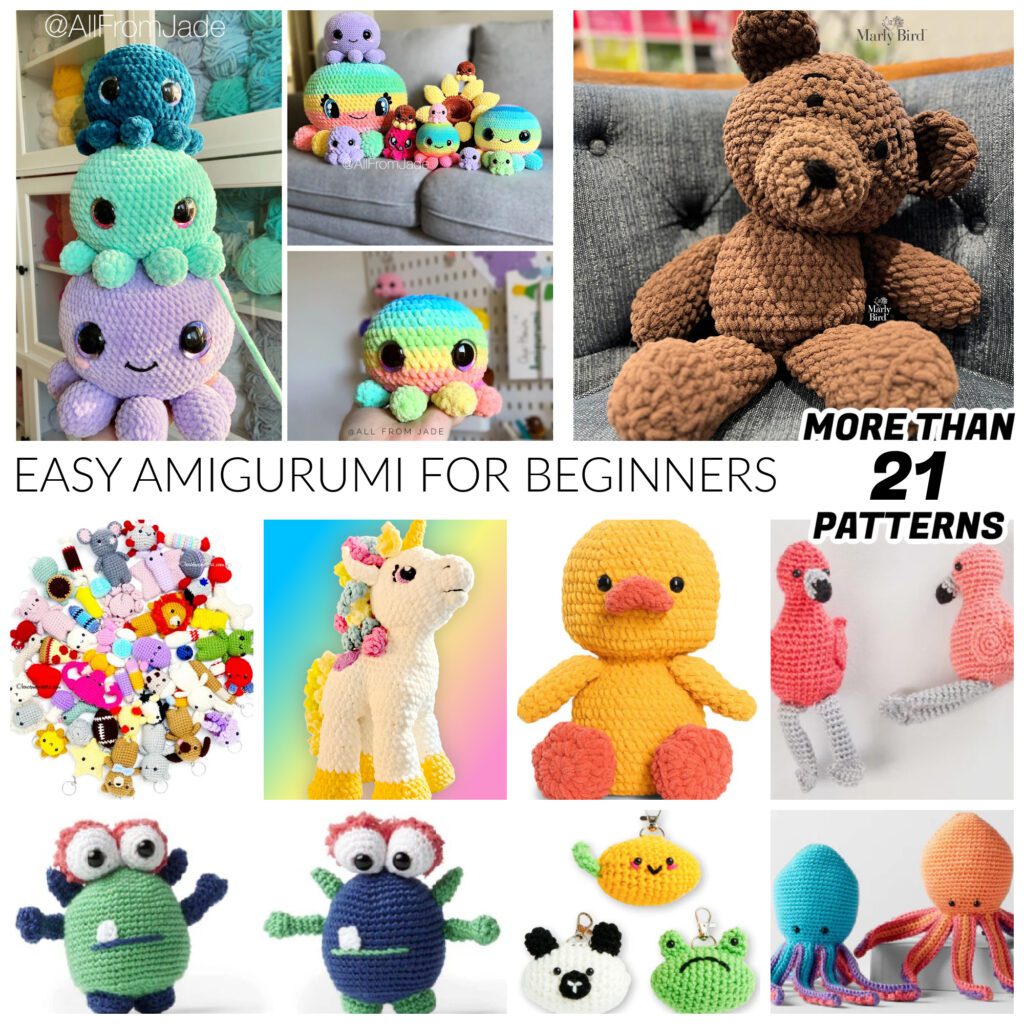
How Do You Start Amigurumi?
The easiest way to start a crochet amigurumi project is with the magic circle or magic ring. I prefer the magic ring over the chain stitch start. While chain stitches can stretch out if not pulled tightly enough, you can cinch the magic ring tight, and it won’t budge! Here’s a video tutorial on how to make a crochet magic ring.
It’s a little different with knitting. The pattern should explain how to start your amigurumi item. There are many ways to do this, so be sure to follow your pattern instructions.
Once you get started, it’s common to find the remainder of the patterns worked in a spiral since spirals don’t produce any seam or seam look.
Awesome! Now, what’s the easiest shape?
What Is The Easiest Amigurumi To Make?
The easiest amigurumi patterns are those that look like a simple ball. That’s because they involve only a few rounds of increasing, some straight work, and then the reflected decrease rounds to match the top to the bottom. It’s really the simplest stuffed toy you can make. Still, with a bit of creativity, you can make a ball shape into any character you want by adding a simple face or other features using embroidery thread and a tapestry needle.
But if you’re making a simple amigurumi character for a baby, DO NOT use buttons as eyes. Babies can choke on buttons that haven’t been attached correctly.
Now that you have some background information about amigurumi, you need some easy patterns to try, right?
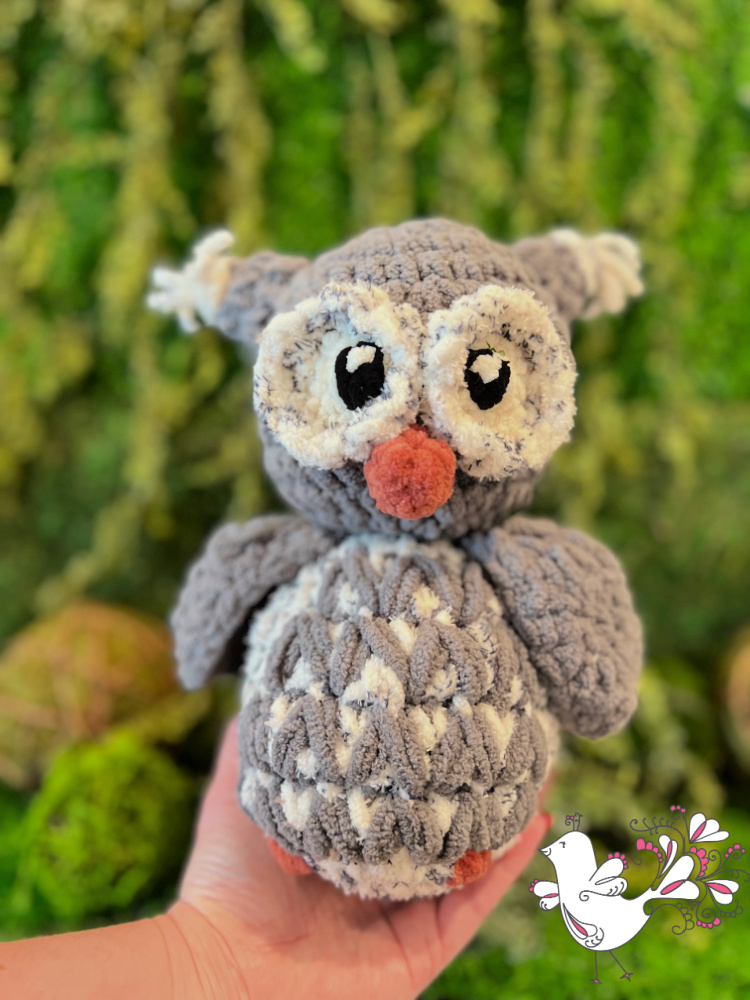
What Are Some Easy Patterns For Beginners?
Beyond the ball shape as the easiest amigurumi shape, along the same lines is anything in a tube shape, such as pencils, snakes, baseball bats, a carrot, and more. Once you’ve increased to the required stitch count, work straight until you want to end your tube, then decrease. But here’s a tip if you’re making a longer tube: stuff sections of it as you work; otherwise, trying to get your stuffing back to the beginning may cause you problems.
Here are a few easy amigurumi patterns for beginners to try out:
- Crochet Tasty Hamburgers – Hamburgers are easy to eat and crochet!
- Crochet Blobs Fidget Toy – Kids will LOVE this one!
- No-Sew Bird Stress Balls – It’s amazing how you can make a simple oval shape look so different!
- Crochet Amigurumi Friends – Super-simple!

Should I Try Amigurumi?
If you enjoy smaller projects and love making toys, then, by all means, go for it! Once you get used to increases and decreases, you should quickly progress from a simple ball shape to something more intricate. Increasing and decreasing is pretty straightforward since most crochet amigurumi patterns are worked in a single crochet stitch.
To increase in single crochet, work two or more stitches into one single crochet stitch according to the pattern you’re following. To decrease in single crochet, work to the last move of one stitch (holding the extra loops on your hook), work to the last move of the next stitch, then yarn over and draw through all loops on your hook. This reduces your stitch count for the next round. Check out our video tutorials to see crochet increasing and decreasing in action.
To increase in knit amigurumi, don’t use yarn over since a yarn over forms a hole. You don’t want holes in your amigurumi work because you’ll be stuffing it. See your knitting pattern for the correct type of knit increase to use. Your knitting pattern should also tell you the style of decrease to use. For more information on knit increase and decrease techniques, see our collection of video tutorials.
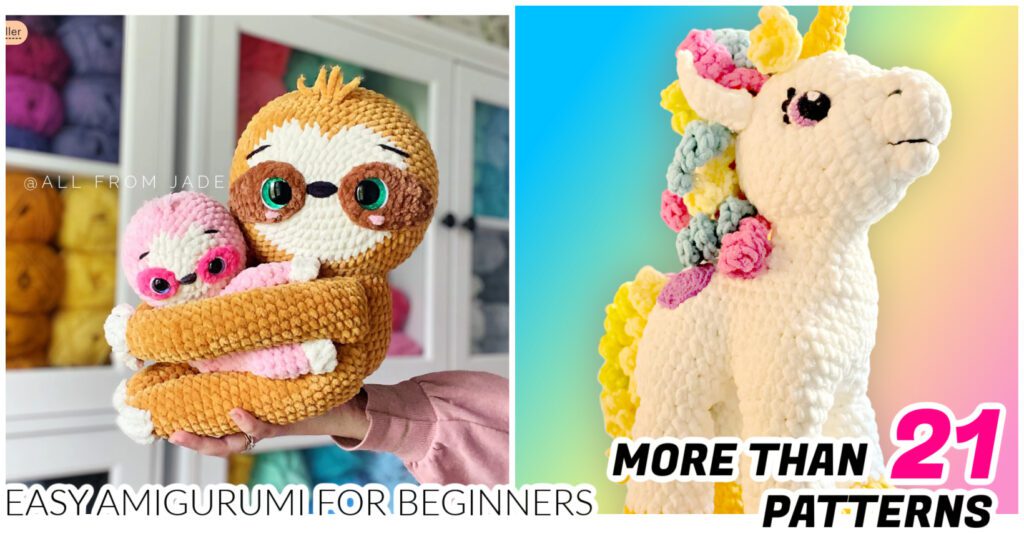
Easy Patterns, Animals, & Some Of My Own
Amigurumi critters are great to give as a gift, and I bet you can make them quite quickly once you get used to the shaping.
Here are some free beginner amigurumi patterns for you to try. Some may be a little more advanced, but with practice, you’ll be whipping them out in no time!
- Mini Crochet Amigurumi Charms – 3 mini shapes – quick and easy.
- Crochet Octopus (Owen & Odette) – Octopi are simple shapes (intermediate).
- Knit Octopus (Oscar & Oprah) – Cute couple (intermediate)!
- Crochet Monster – Super easy shapes (intermediate).
- Crochet Ladybug & Caterpillar – Another cute couple (intermediate).
- Sloth Duo – 🤩 OMG, UNBELIEVABLY Adorable
And for you animal lovers, here are a few beginner crochet animals:
- Sammy & Stu Crochet Puppy Pattern – One sits and one stands.
- Quackers The Crochet Duck – Give him a hug!
- Fiona & Fred Crochet Flamingoes – Just imagine you’re in Florida!
- Ollie The Elephant – Oh, so snuggly!
- Octopus Family – So Cute!
These little projects can give you a great sense of achievement, especially when you can pump them out quickly. They’re WAY quicker than something like a sweater or blanket, which makes them a great option for a quick project to take on vacation, make in front of the TV, or even at a summer baseball game.
Here are a few more cuties I designed. They might look more complex, but the patterns are really helpful! You can do this!
Hope you love these guys as much as I do!
Alden The Owl – A wise old soul.
Felix The Fox – Such a cutie!
Simple Crochet Frog – He’s gonna make you smile.
Leap The Tree Frog – Leggy and fun – he’s a treat!
Big Teddy Bear – Snuggle up with this guy.
Sparkle The Crochet Unicorn – A standing unicorn like you’ve never seen!
Bunny Rabbit – Super cute and simple + it has a carrot!
F-Bomb – Something a little different but fun to KNIT!
Crochet Gnome Doll – Simple and fun to make.
Categories: Crochet, Free Patterns, Knitting, Pattern

